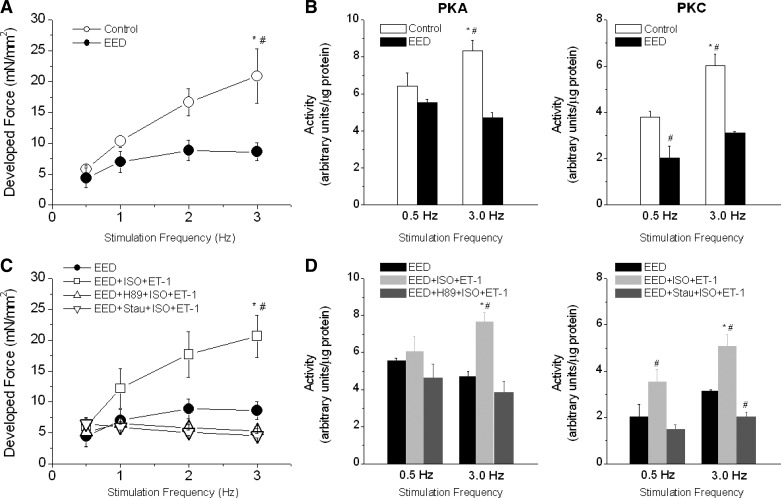Fig. 9.
Association between the FFR and activity levels of PKA and PKC. A: effect of stimulation frequency on developed force in control (intact) and EED cardiac muscle. B: effect of stimulation frequency on PKA activity and PKC activity in control and EED cardiac muscle (n = 8–12). Frequency-dependent increases in PKA and PKC activity were observed in control but not in EED muscles. C and D: the combination of ISO (0.1 nmol/l) and ET-1 (10 nmol/l) restored the FFR (C) and frequency-dependent increases in PKA and PKC activity (D) in EED muscle. However, H-89 blocked the increase in PKA activity and staurosporine blocked the increase in PKC activity (n = 5–8). *P < 0.05 vs. 0.5-Hz stimulation frequency; #P < 0.05 vs. other groups at the same stimulation frequency.

